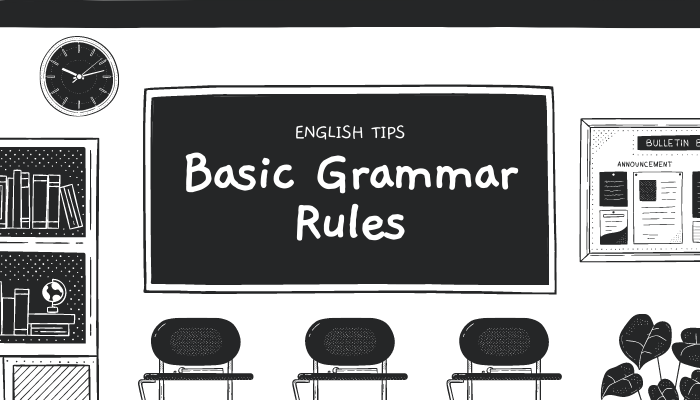


It seems like English grammar has about a million rules to learn. Between subject-verb agreement, Oxford commas, and active vs. passive voice, it’s easy to get lost in the grammar shuffle. But there aren’t actually a million grammar rules - in fact, if you master just these few, you can avoid common grammar mistakes.
1. Write in Complete Sentences
Every sentence needs two parts to be complete.
Depending on the verb, a complete sentence — also known as an independent clause — might also have a direct object (Katie plays the violin). If your sentence is missing a subject or a verb, it’s a sentence fragment.
2. Make Sure Your Subjects and Verbs Agree
You may not expect to find disagreement in a sentence about kittens, but the sentence “My kittens wants food” is definitely having an argument with itself. The subject (kittens) is plural, but the verb (wants) is singular.
For subject-verb agreement, match singular subjects to singular verbs and plural subjects to plural verbs.
3. Link Ideas With a Conjunction or Semicolon
Although writing in simple sentences is grammatically correct, it’s not very interesting. Combine your simple sentences with coordinating conjunctions (for, and, nor, but, or, yet, so) to make compound sentences.
You can also mix it up by using a semicolon instead of a conjunction.
4. Use Commas Correctly
While you can use a comma with a coordinating conjunction, you can’t use a comma alone to combine independent clauses. That’s an error known as a comma splice, and it creates run-on sentences. Use a comma only if you’re also using a coordinating conjunction.
5. Use Active Voice
Sentences in active voice put the subject before the verb. For example, in the active sentence “The duck ate the bread,” "the duck" is the subject. It performs the action in the verb (ate) to the object in the sentence (the bread).
In these examples, the subjects are bold, the verbs are underlined, and the objects are italicized.
Passive voice sentences place the subject after the verb — or they leave the subject out completely. “The bread was eaten by the duck” is a passive sentence because the subject (the duck) comes after the verb (was eaten). The object of the sentence (the bread) somehow ends up at the beginning of the sentence, which makes it confusing to read.
Writing in passive voice makes your sentences confusing and your meaning unclear. Luckily, it’s easy to turn passive voice into active voice.
6. Use the Correct Verb Tense
Using a verb tense that doesn’t match your time period is like stepping into a broken time machine. When did the action happen — today, tomorrow, or one hundred years ago? Is it still happening?
Make sure that you’ve got the correct tense for the time period you’re describing.
When talking about a continuous action, you can use present, past, or future progressive tense (with -ing verb endings). If you’re talking about something that happened across a span of time, use perfect verb tenses (with the modal verb "have" or "had").
7. Keep Your Verb Tense Consistent
Another part of using the correct verb tense concerns consistency. If you start your sentence (or paragraph, or page, or book) in one tense, you need to make sure the rest of your writing is also in that tense. You can go back and forth if you’re talking about different time periods, but be careful not to mix them up.
8. Keep Your Homophones Straight
Using "too" when you mean "to" is a common — and avoidable — mistake. Make sure you know the difference between common homophones to keep your meaning clear.
These aren’t the only commonly confused words in English. Find the ones that confuse you the most and learn how to tell them apart.
9. Use End Punctuation Correctly
All good things must come to an end, and that includes your sentence. Be sure that you’re using the correct end punctuation mark for your sentence for the tone you want.
If your sentence ends in a quote or dialogue, put your end punctuation (also called terminal punctuation) inside the quotation marks as well.






















